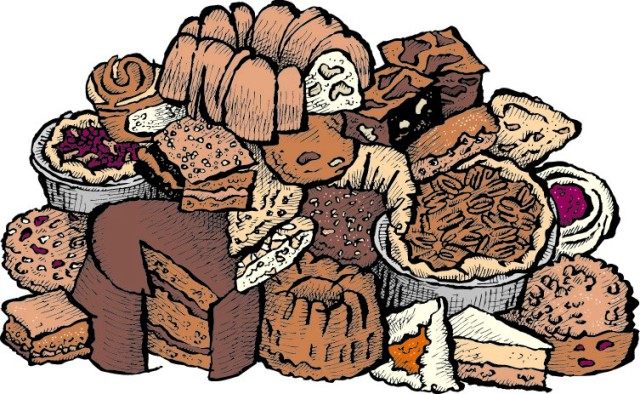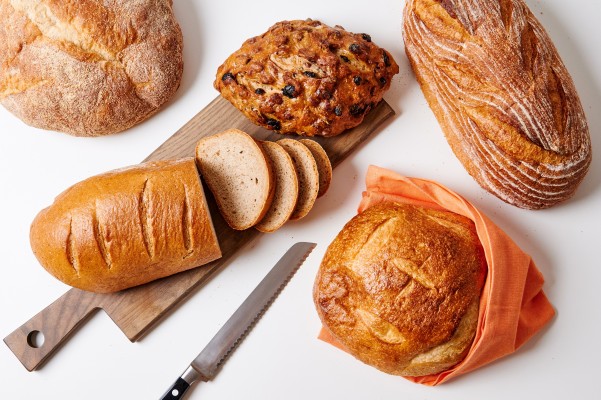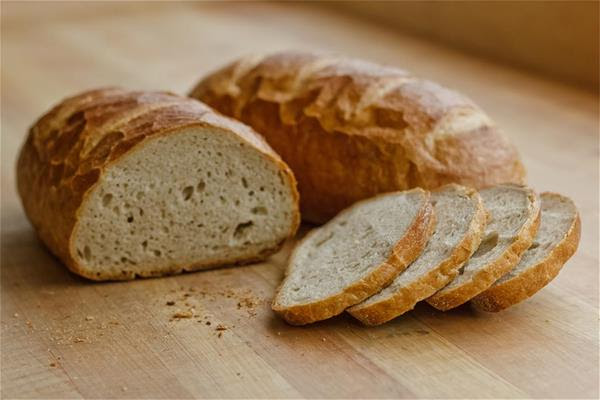
How long will the baked goods last?
All of our Zingerman’s Bakehouse pastries and coffee cakes are baked with full-flavored ingredients, but without preservatives. The good news is we’ve done the hard work of tasting and testing to ensure that they can be enjoyed for weeks to come.
If enjoying soon, keep them at room temperature.
Each baked good will have an “eat or freeze by” sticker that is about two weeks from when the package ships out. If enjoying the treats within a week or so of delivery, they can be kept at room temperature in the packaging they arrived in or in a plastic bag. Avoid the refrigerator, it can ruin the texture.
If enjoying later, keep them in the freezer.
For longer term storage, all of our baked goods freeze well for up to three months. They can be stored in the freezer in their original packaging or, if they’ve been opened, double wrapped in plastic bags.
After the freezer, it is best to allow frozen pastries and coffee cakes to defrost slowly at room temperature in the packaging. That’s all–though with some pastries like scones, a little warm up in an oven will make them extra delicious.

Bread by mail? Really?
We ship thousands of loaves every year to bread lovers nationwide.
Our artisan bread is baked down the road from us at Zingerman’s Bakehouse. We ship bread using two business day service – nothing slower. Our bread doesn’t have any preservatives, so we use expedited shipping to help ensure it arrives in great condition.
The bread will last on the counter for a few days in its Zingerman’s bread bag.
It does not need to be refrigerated – in fact, we recommend you avoid the fridge! Refrigeration will wreak havoc on the texture.
If you want to keep the bread for more than a few days your best bet is to freeze it.
Double bag the loaf—or part of it—in plastic and freeze for up to three months.
All of our full-flavored breads are completely baked all the way so reheating is not necessary.
You can eat the bread right out of the bag (ripping pieces or cutting slices – no judgment here). If it seems a little hard or dry, that’s because the thick, crisp crust is meant to protect the bread. Just like the rind on a natural cheese, real bread has very real crust to protect the inside of the loaf from drying out.
We only suggest that the bread will give you the “just out of the oven” experience… if you reheat it in the oven.
For a warm crackly crust and a soft, chewy crumb, we suggest putting your loaf (whole, half, or part) in a 325 degree oven for approximately 15-20 minutes. If you’re pulling bread out of the freezer, let it defrost for about 30 minutes before throwing it in the oven.

What makes our Jewish Rye Bread so great?
Excerpted from the new Zingerman’s Bakehouse Book
In order to open Zingerman’s Bakehouse, we had to be able to bake great Jewish Rye Bread for Zingerman’s Delicatessen, which was our first (and at the beginning our only) customer. It’s not possible to have a superb Reuben sandwich without authentic Jewish rye bread. We wanted our Jewish rye to be an essential part of the sandwich, not just a structural element that didn’t really add to the flavor. So right from the beginning, we used and further evolved the excellent recipe and techniques we learned from our first teacher, Michael London.
First, we use a sour starter, which is unusual these days.
It adds a little bit of leavening to the recipe, but mainly it provides depth and complexity of flavor. We created the starter in the fall of 1992, and we’ve been feeding it every day since to keep it healthy, with just the right amount of tang. This version of rye bread was the one made most often by the Polish Jewish bakers in New York and was called sour rye. It later became known as Jewish rye.
Second, we use “old” rye bread from the previous day’s bake.
We slice and soak it in water and then add it to the dough. It adds a layer of texture, flavor, moisture, and color to the bread. It’s also a tradition for Jewish bakers to take something from yesterday and put it in today’s recipes, representing the continuity and interconnectedness of life.
Third, there’s actually some rye in the recipe.
Many rye breads are made from white-wheat flour with a touch of rye added. We use lots of medium rye (rye flour that has some of its bran) in our sour starter.
Finally, we create a real crackly crust.
We brush each loaf with water before it goes into the oven and then again when it comes out. The contrast of the cool water on the hot loaf causes the crust to crack in a distinctive way that is characteristic of Jewish rye.